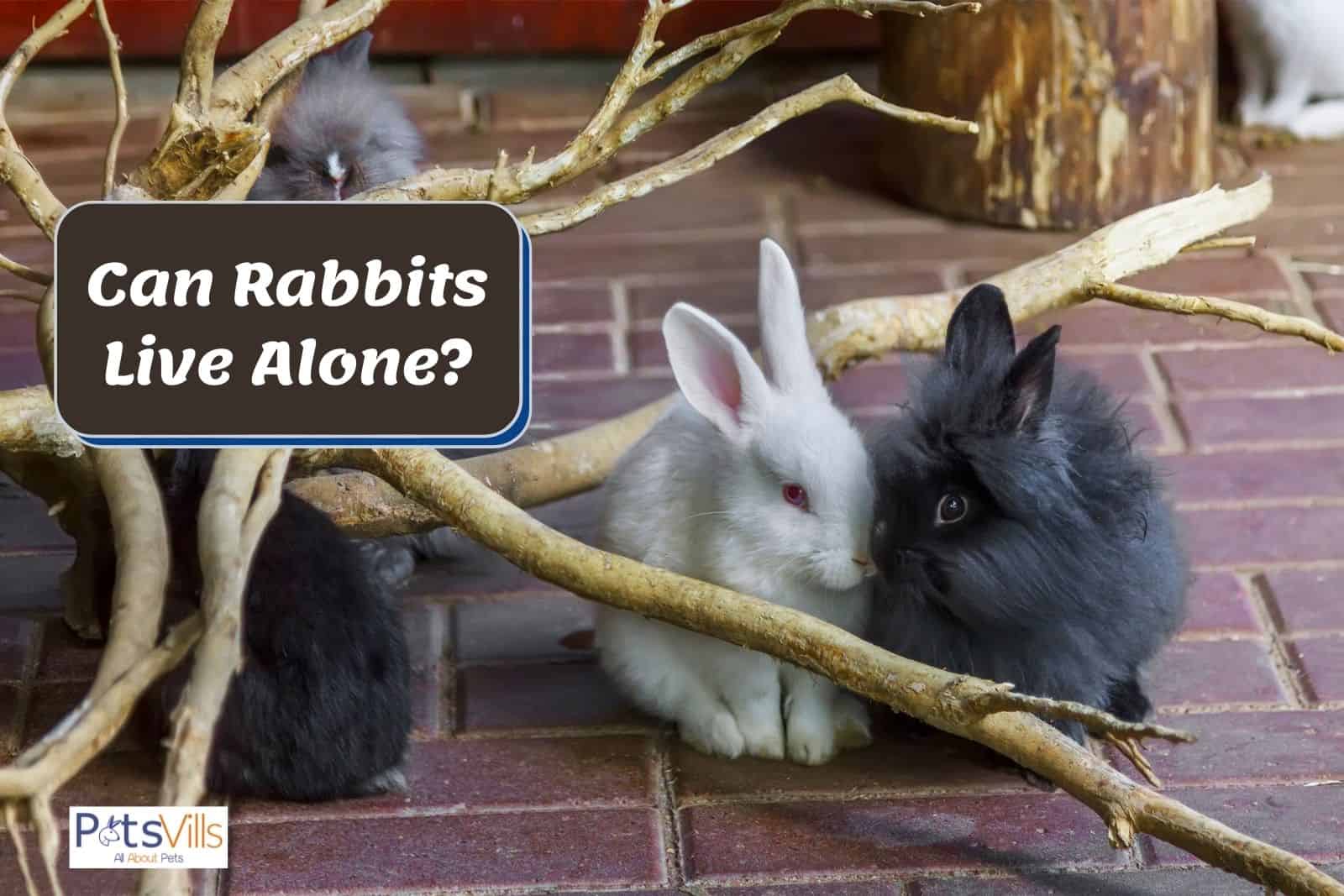Rabbits are loving and social animals who require companionship to thrive. Owning two rabbits does mean a little more work and expenses, so you might have wondered whether they need to live in pairs.
Do rabbits need to be in pairs? Yes, rabbits should be kept in pairs or small groups. Although rabbits can live alone, they do much better with another rabbit.
Read on to find out what to consider when pairing rabbits, whether they can live with guinea pigs, and the signs of loneliness in rabbits.
CHECK: Do Rabbits Bite?
Table of Contents
Do Rabbits Need to Be In Pairs?
Rabbits are social animals [1] and do much better when housed in pairs or groups.
Rabbits that live alone can become lonely and depressed [2], so it is good to provide them with a friend.
Bonded rabbits will do everything together, such as grooming, playing, sleeping, etc.
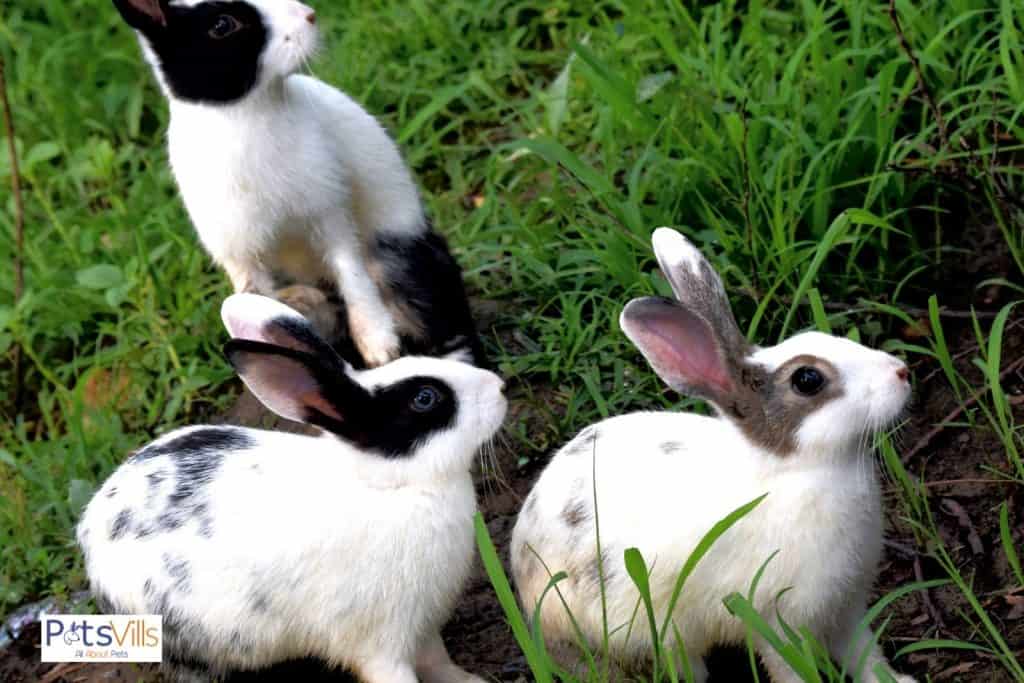
By the way, don’t forget to check our guide on how long does rabbit sleep.
A common misconception is that owning a pair or group of rabbits will make them less bonded to their owner.
This couldn’t be further from the truth. A pair or group of rabbits can still be very close to their owner. As long as you tame and interact with your rabbits regularly, then they will still become bonded to you.
However, rabbits can live alone. If you are planning on keeping a lone rabbit, you need to provide them with a lot of attention.
Single rabbits will rely solely on you for your companionship, so you need to make sure you can give them plenty of time.
Take a look at this video to know the expert’s opinions.
If you are away from home a lot or have a busy schedule, it is not recommended to keep a single rabbit.
If you work from home or at home often, this should be enough to provide a single rabbit with enough attention.
You will need to make sure your rabbit is away from their cage a lot of the time to ensure they do not get bored or lonely.
A single rabbit who is free-roam and can go wherever it wants may be more ideal.
A single rabbit is likely to grow extremely close to you and will probably follow you around everywhere. This is adorable, no doubt, but can also be problematic.
Your rabbit is likely to become distressed and anxious when you are away from them. This can mean things like going on holiday problematic, so this is something to keep in mind.
It’s a lot easier and simpler to provide your rabbit with a friend to play with!
My Rabbits Partner Has Died, Should I Get Another One?
It is a good idea to get your rabbit another friend if their previous partner has passed away. Rabbits can live alone but are much happier in pairs or groups.
Rabbits who have previously lived with other rabbits will find it extremely hard to adjust to life by themselves.
This is why you recommend finding another companion for your rabbit if their previous one has passed.
Rabbits who have recently lost their partner can find it difficult, especially if they are well-bonded.
Grieving rabbits may lose their appetite and be quieter than usual.
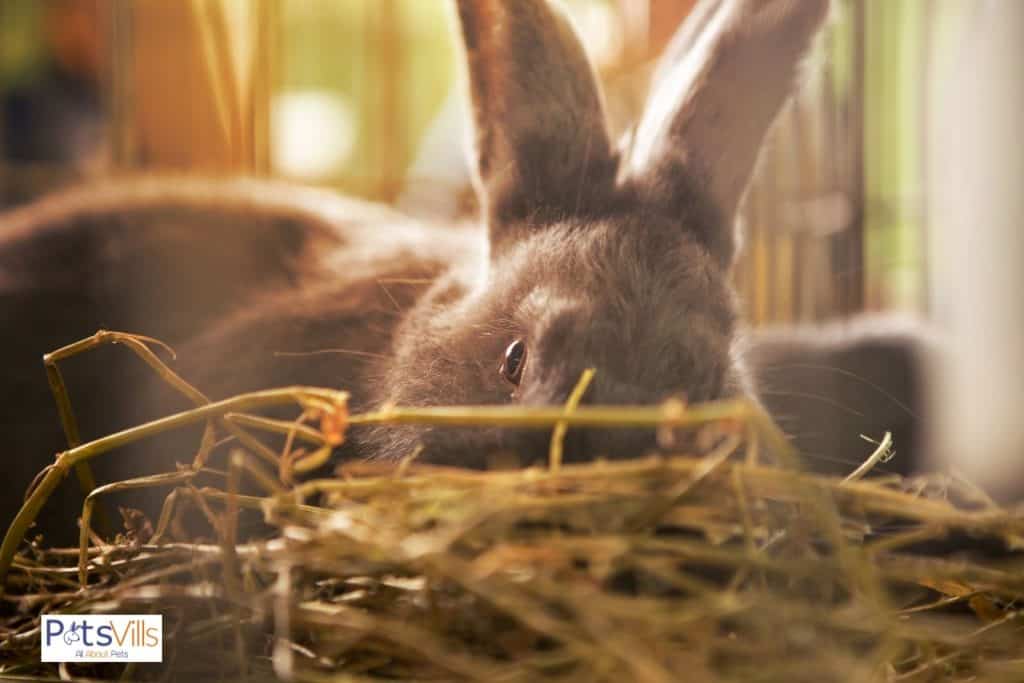
This typically only lasts a few weeks. Make sure you give your rabbits extra attention, pets, and love during this time to comfort them.
Most rabbits who have lost their companion will readily accept a new friend, so if you plan to find another partner for your rabbit, then it’s a good idea to do it as soon as possible.
Some rabbits may need a little longer to move on after a friend has passed. If your rabbit seems disinterested in its new rabbit companion, don’t fret.
Give your rabbit a little more time and try the introduction again at a later date. Always take things nice and slow when you are introducing rabbits.
Introducing Rabbits
It would help if you did a bit of planning when introducing rabbits who have never met before.
You should make sure the rabbits [3] you want to pair are compatible.
For example, a neutered male and a neutered female make a good pair.
You should start slow and place your rabbits in adjoining cages so they can see one another.
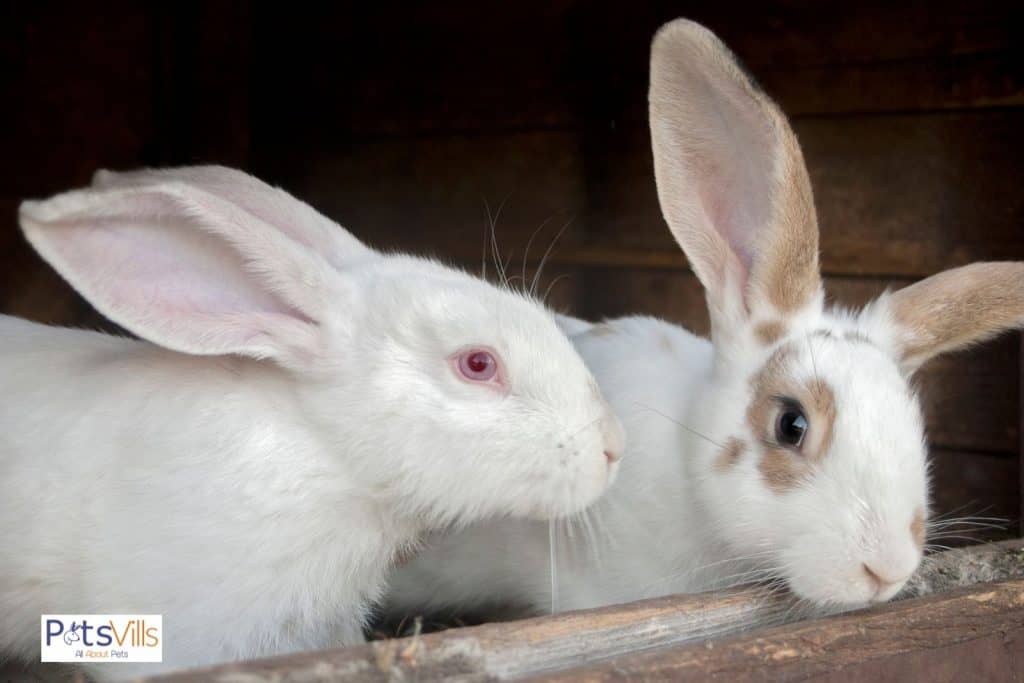
Monitor their behavior closely to determine when they are ready to meet face-to-face.
This step could take some time, so try to be patient. Introducing your rabbits before they are ready can result in fighting and aggression, which you don’t want.
When your rabbits seem ready to meet one another adequately, make sure you introduce them on neutral ground, such as a bathroom.
Don’t just take one of your rabbits and place it in the other one’s cage/hutch as they are likely to defend their territory. The place needs to be somewhere your rabbits are unfamiliar with.
Never leave your rabbits unattended during the introduction process, and be ready to intervene if necessary.
Carefully watch both of your rabbit’s behavior. Your rabbits may bond straight away, or they may act fearful or aggressive around one another. These are all normal.
If your rabbits are fighting, spraying them with water can help deter this behavior. If you think the fighting is getting out of hand, separate the pair immediately.
Introductions should only last between 10 and 20 minutes at first to prevent your rabbits from getting overly stressed.
If the meetings are going well, you can gradually increase their length to around 30 or 40 minutes.
Depending on your rabbits’ personalities, the amount of time it takes before you can house them together can vary.
Some rabbits will bond with one another after the first session. Others could take months or may not be compatible.
Be Careful of the Wrong Rabbit Combinations
It’s important to note that not all rabbits are compatible with one another. Just like humans, not all rabbits get along!
Don’t house mature rabbits that have not been neutered. Unneutered males are likely to fight over territory and dominance.
Even two unneutered females can be highly aggressive towards one another, especially during the breeding season.
Neutered rabbits are much friendlier and less aggressive.
They are also easier to tame and live for longer as they are likely to develop urinary tract infections and cancer.
The most recommended rabbit pairing is a spayed female and a neutered male.
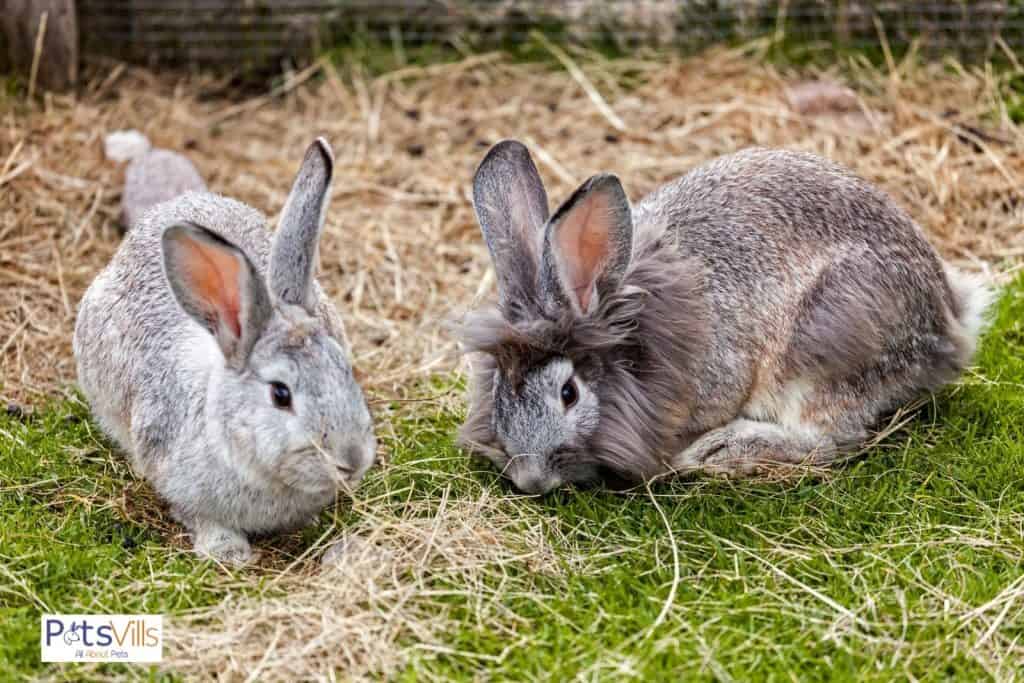
Female rabbits and male rabbits are more likely to bond and get on with one another.
You must neuter the male and female rabbits to avoid mating, and you end up with many baby rabbits.
Don’t be tempted to neuter your male rabbit or just your female rabbit.
This will result in one of your rabbit’s being frustrated and acting on their urges, which will cause unnecessary stress on their companion.
If your female rabbit cannot be spayed, you should wait at least three weeks before you introduce them to a male rabbit that has just been neutered.
This is because there is a possibility that they could still get your female rabbit pregnant.
Additionally, you should try to avoid the mating season if you plan to introduce an un-neutered female rabbit and neutered male rabbit. Female rabbits can be more temperamental and irritable during this time.
It is advisable to pair or group rabbits of a similar age and nature.
Young rabbits are very active and energetic, so they may be an unsuitable companion for an elderly rabbit who wants to lounge about all day.
It would be best if you also considered both rabbits’ personalities. Two high-strung or bossy rabbits may not be the best pairing, resulting in conflict.
Can Rabbits Live With Guinea Pigs?
A popular belief is that rabbits and guinea pigs can live together, but this is not recommended.
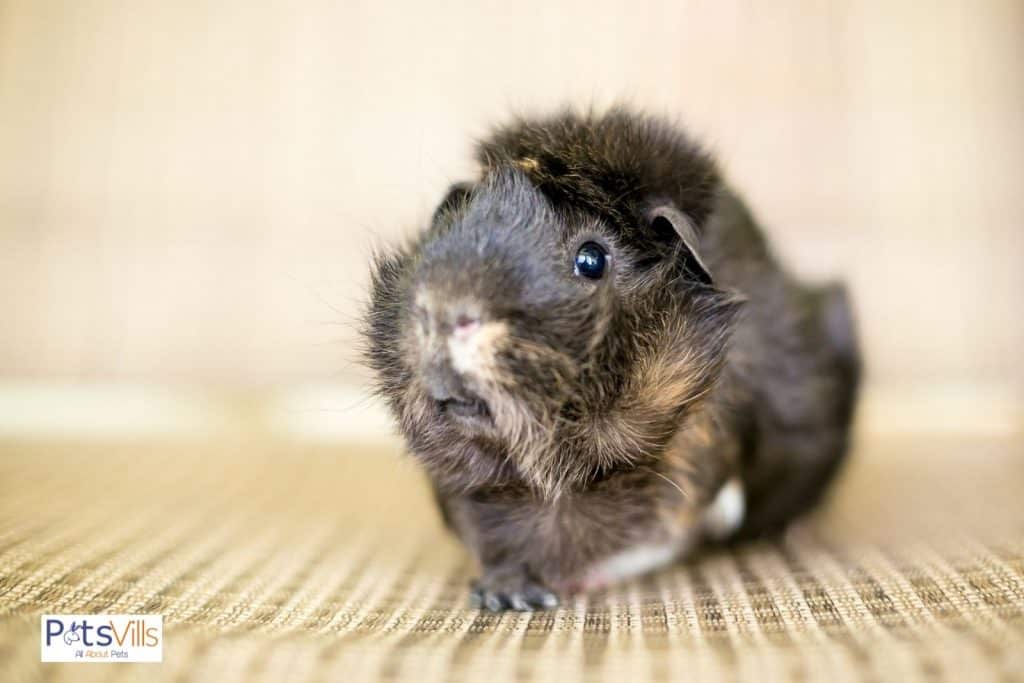
Here are a few reasons why rabbits and guinea pigs should not be housed together.
- Rabbits and guinea pigs are different species. Although they are both social animals, they should only be kept in pairs or groups of their kind.
- Rabbits and guinea pigs communicate differently so will not be able to comprehend one another’s behavior. This can be dangerous as a rabbit will not be able to understand what a guinea pig is ‘saying’ (and vice versa).
- Rabbits and guinea pigs have completely different dietary requirements and require different foods.
- Rabbits are larger and more powerful than guinea pigs. This can result in a guinea pig being severely hurt if a rabbit kicks out with its legs or tries to mate with them.
- Rabbits can pass on dangerous bacteria to guinea pigs that can be fatal.
- Rabbits and guinea pigs have different exercise needs. They also require a different amount of space to live in.
Do Rabbits Get Lonely?
Rabbits get lonely, especially if they are not given enough attention or interaction.
Wild rabbits are constantly around other rabbits as they live in groups.
Domesticated rabbits are equally as social and require companionship to be happy.
Keeping rabbits in pairs or groups is the best way to stop them from getting lonely and depressed.
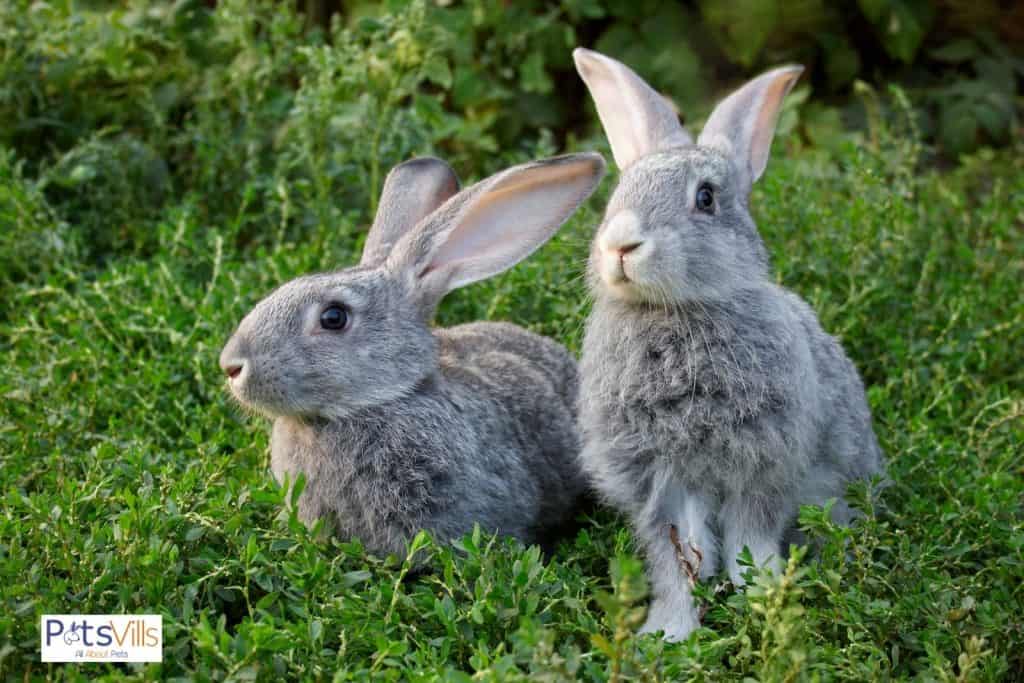
However, if this is not possible, you will need to provide your rabbit with constant attention.
Lonely rabbits will often act out and become destructive. They may chew cage bars, nibble furniture, rip up carpet, etc.
A lonely rabbit may also pull out their fur, refuse to eat, and begin to distance itself from its owners. Or they might do the opposite and nudge or ‘box’ (dig) their owners.
They might also overeat, act lethargic, or even nip as a way to get their owner to pet or interact with them.
How Much Space Do Rabbits Need?
Rabbits need a good-sized cage or hutch to live in, as well as an adequate amount of space to exercise in.
When choosing a cage or hutch, the number of rabbits you own will need to be factored in. If you have a group of rabbits, they will need a bigger cage/hutch than a single rabbit.
When picking a cage or hutch for your rabbit, it needs to be able to fit in all the bare essentials, such as bowls, rabbits toys, etc.
Your rabbit should be able to lay down and move around comfortably in its cage.
They should be able to stand up without bumping their head on the ceiling.
The cage should be long enough to allow your rabbit to hop three times without reaching the end.
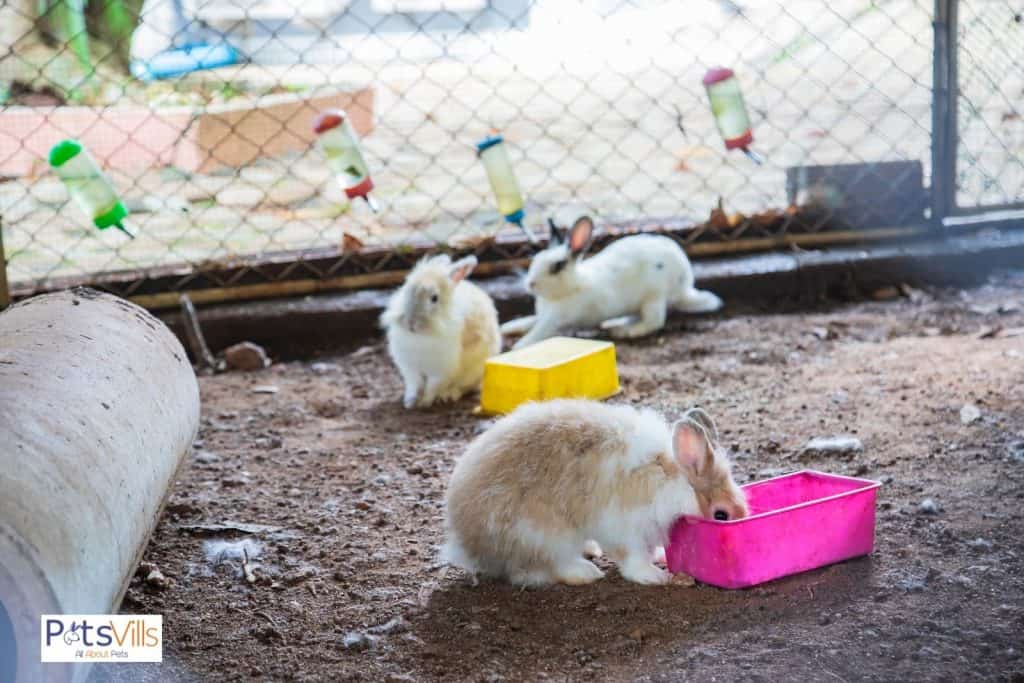
Cages or hutches that contain a separate exercise area are a good idea. For example, a hutch that is connected to a run.
These types of cages allow your rabbit to exercise whenever they want, which is useful as they are typically more active at dawn or dusk when you’re asleep!
However, as long as you exercise your rabbit for at least 3 hours a day, these cages are not mandatory.
The minimum amount of living space a rabbit needs is 12 square feet (or 1.1 square meters). You should aim for a run or playpen around 8ft x 8ft or 240cm x 120cm.
Bigger is always better, though, so try to provide your rabbit with even more space if you can.
The BlueCross has a great article worth reading for more information on how much space and the type of hutches are suitable for your rabbits.
ALSO READ: Best Rabbit Beddings
How Often Should I Play With My Rabbit?
You should interact and play with your rabbit every day.
Rabbits are social and playful animals who need a lot of stimulation to prevent them from becoming bored.

Rabbits require at least 3 hours of exercise each day, so letting your rabbit outside of their cage to have a run around is a great way to play with them.
If you own a single rabbit, you will need to provide them with even more attention and interaction.
READ MORE: Why Does My Rabbit Grunt?
FAQs
What do rabbits eat?

Rabbits need high-quality grass hay, vegetables, and pellets in their diets. Grass hay should make up the main component.
How long do rabbits live?
On average, rabbits live for around 7 to 10 years in captivity with good care. Wild rabbits only live for about 1 to 2 years due to dangers like predators.
Are rabbits nocturnal?
Contrary to popular belief, rabbits are not nocturnal. Rabbits are crepuscular, which means they are most active at dawn and dusk.
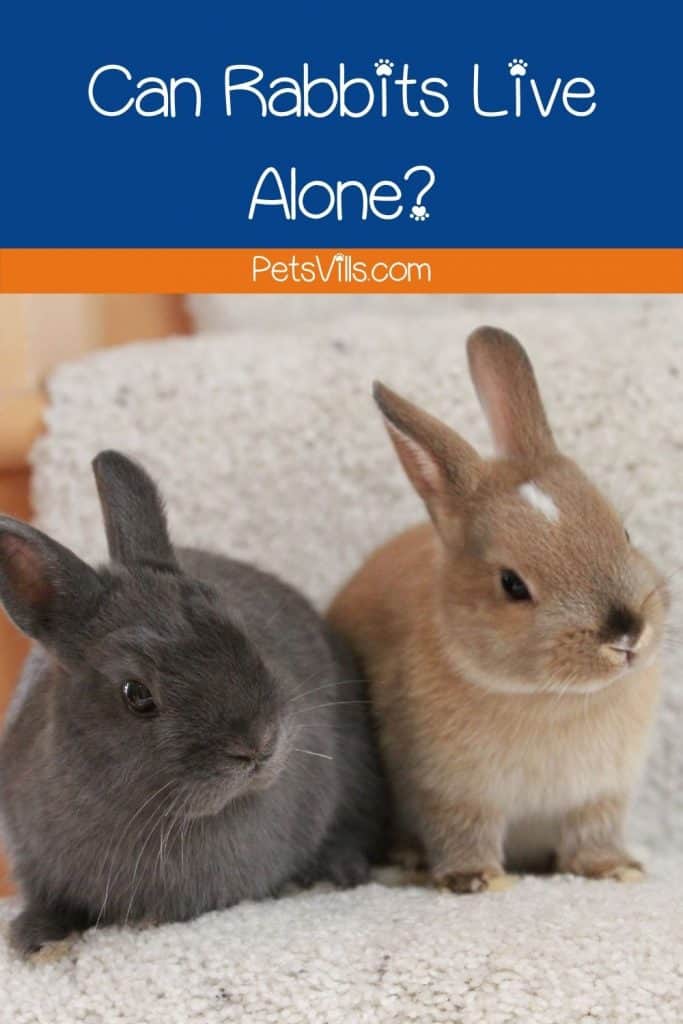
Have you ever experienced losing a rabbit? How did your other bunnies cope up? We’d love to hear your experiences below!
Resources
- 1. DiVincenti L, Rehrig AN. The Social Nature of European Rabbits (Oryctolagus cuniculus). Journal of the American Association for Laboratory Animal Science : JAALAS [Internet]. 2016;55:729–36. Available from: https://www.ncbi.nlm.nih.gov/pmc/articles/PMC5113872/
- 2. Rabbits should show normal behaviour patterns [Internet]. nidirect. 2015. Available from: https://www.nidirect.gov.uk/articles/rabbits-should-show-normal-behaviour-patterns
- 3. The Complete Guide to Rabbits [Internet]. www.petmd.com. Available from: https://www.petmd.com/rabbit/general-health/complete-guide-rabbits
Barry Stingmore is a British content writer living in Fuerteventura, Spain. An animal lover at heart, he shares his home with a dog and four rescue cats and has a passion for writing about animals big and small.
Barry loves finding answers to your animal-related questions, the more research involved the better! You can rely on him to find the facts.
Find him on FACEBOOK, TWITTER AND Linkedin
Read his latest ARTICLES.
Find more about him HERE.

